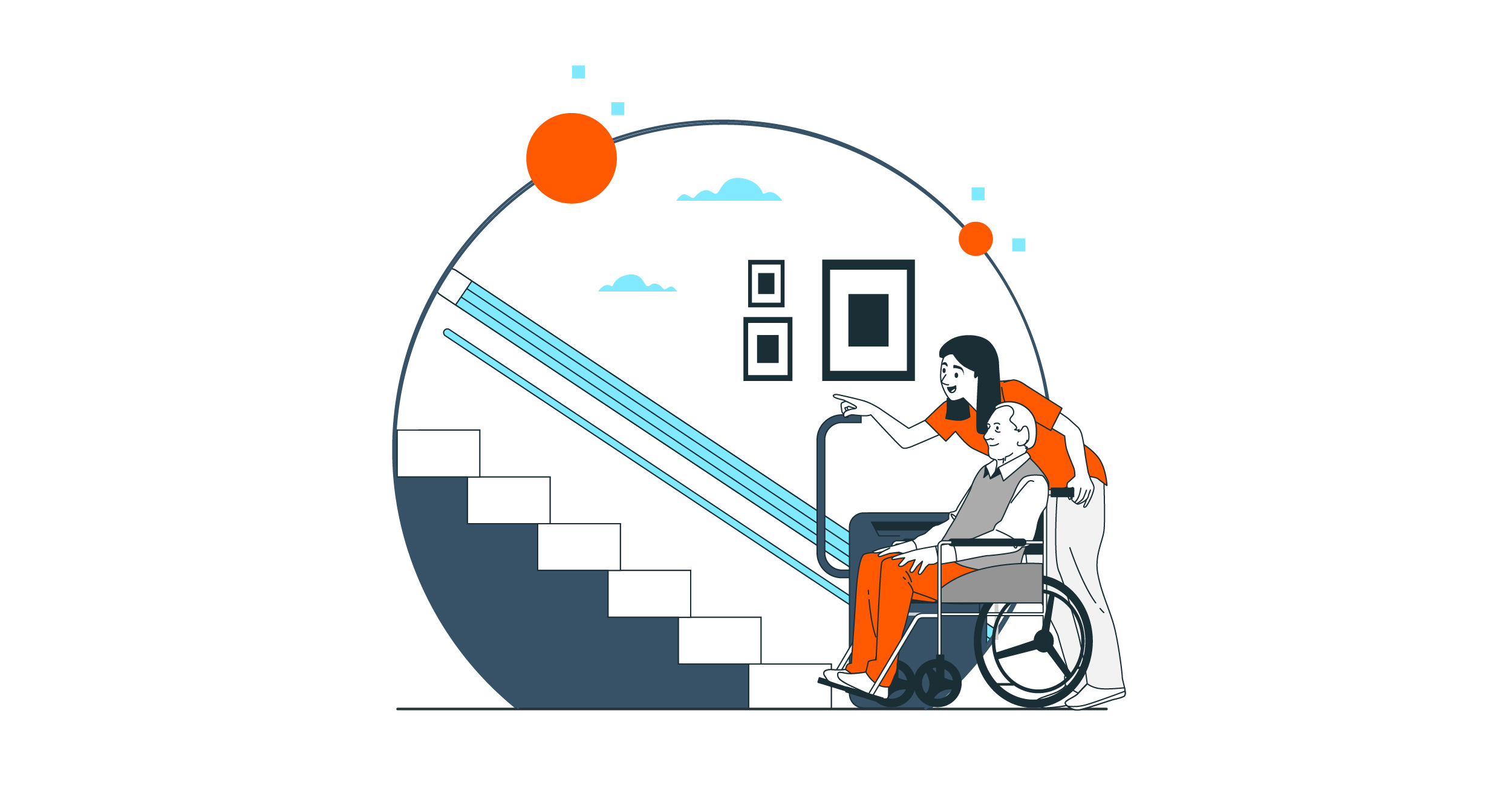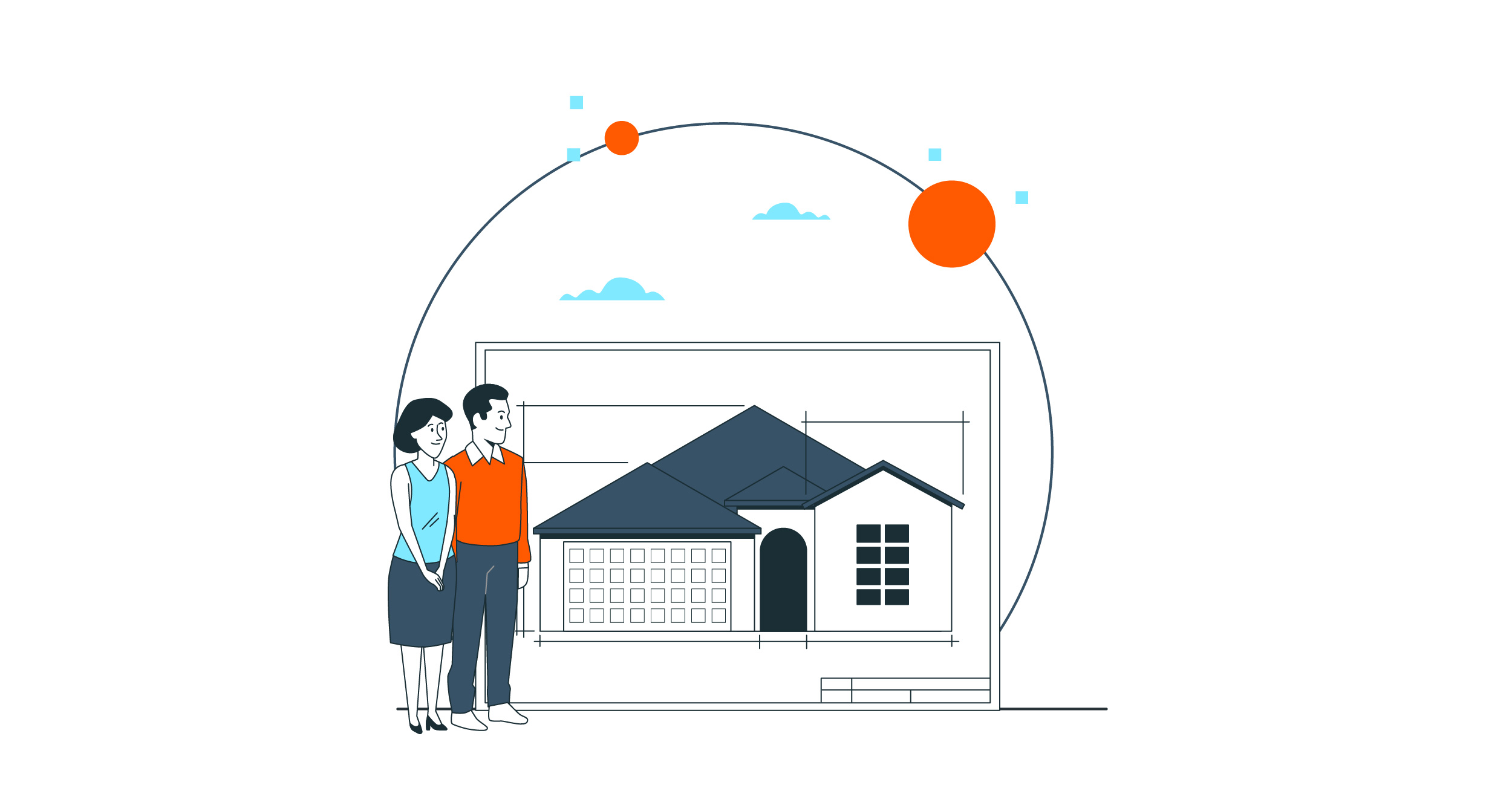
|
Highlights:
|
Around a quarter of all adults in the UK have a disability or impairment.
For these people everyday tasks in the home can be challenging, mainly because most houses aren’t designed with accessibility in mind.
This can seriously affect people’s quality of life. A recent example is 18-year-old Zack Leveson, whose father had to lift him into the bath.
Zack’s father had been waiting for hoists to be installed by his housing provider since 2015.
And quality of life isn’t the only issue; people with disabilities or impairments face various additional risks in the home.
Landlords are responsible for making accessibility adjustments to their properties when requested to do so by a disabled resident.
This article explains what accessibility improvements landlords are responsible for. It also highlights common accessibility problems and solutions for two high-risk areas of the home: bathrooms and kitchens.
What Housing Rights Do Disabled People Have?
The Equality Act 2010 says that private landlords and local authorities must make reasonable adjustments to properties when requested so that disabled people can use them.
This includes:
-
Adjusting the property’s physical features.
-
Providing auxiliary aids - for example, fitting a visual doorbell for deaf residents.
-
Consenting to disability-related improvements that the resident wishes to make.
-
Adjusting the way the property is managed and your services are delivered.
This law covers requests from:
-
Tenants or sub-tenants.
-
Leaseholders.
-
People who are part of a commonhold.
-
Other people who live with one of the above.
Reasonable adjustments are changes that:
-
Remove a substantial disadvantage.
-
Allow the resident to enjoy full use and benefit of the property.
-
Are affordable and practical for the individual landlord.
Because of this, what constitutes reasonable adjustments depends on the individual resident and landlord.
Larger housing providers may have more resources than individual landlords, meaning they can make more extensive adjustments.
Be aware of discrimination
You cannot deny a disabled resident a tenancy because you don’t want to spend money on making reasonable adjustments.
Doing this would count as discrimination, which is illegal.
Discrimination also includes:
-
Imposing different terms based on the person’s disability.
-
Treating the person differently when they are seeking or renting a property.
-
Evicting them or trying to secure their eviction based on their disability.
-
Subjecting the person to any other detriment.
💡What is the definition of a disability? |
|
The Equality Act defines a disability as a physical or mental impairment. This impairment has a long-term adverse impact on the person’s ability to do day-to-day activities. Citizens Advice has resources to tell you if you or someone else has a disability. |
Your resident may wish to adjust your property themselves. If this is the case, they need to seek your permission.
Getting help with adjustments
Disabled residents and their landlords can get help with funding and implementing reasonable adjustments.
Examples include:
-
Asking your local authority to make adjustments.
-
Applying for a disabled facilities grant to fund the work.
-
Applying to an energy efficiency scheme.
-
Asking your resident to speak to a home improvement agency.
What’s the process for making reasonable adjustments?
Here’s a quick overview of the process you’ll need to go through if your resident requests adjustments to their home.
-
Check who needs to make adjustments: Is your resident disabled and are you the person responsible for making those changes? For example, it may be the responsibility of a lettings agent or a property manager.
-
Ask your resident to write to you explaining their significant disadvantage: Your tenant needs to explain why they cannot fully use the home in its current state. For example, if they cannot climb the stairs to access the bathroom they may need a stairlift. Remember, some people may need support to write to you.
-
Ask what modifications your resident needs: Ask your resident to clearly state what adjustments they’d like you to make. This avoids issues later on.
-
Check if the requests are reasonable: Based on the above criteria, are they affordable?
-
Write and sign an agreement: Ensure you get any agreement in writing. You should get details of:
-
What you agreed.
-
Who is paying.
-
When work will begin/end.
-
Whether this will impact rent.
-
If you disagree: Speak to Citizens Advice and the National Residential Landlords Association. They can advise you on you and your resident’s rights. You may need legal advice if you still cannot reach an agreement.
💡How many disabled people are living in social housing? |
|
Around half of all people living in social housing have a disability. That’s about 25% of the total disabled population, or 4 million people. Disabled people are more likely to live in social housing than own their own home, in privately rented accommodation or with parents. |
What Is Disabled-Friendly Housing?
Photo by Marcus Aurelius
Disabled-friendly housing are properties adapted to be accessible for people with a physical disability or sensory impairment.
These homes usually feature modifications to the physical layout or adaptations that help the disabled or impaired resident live as independently as possible.
The modifications made to disabled-friendly houses vary depending on the individual’s needs. For example, a home for a deaf person will require a different set of changes to one for a wheelchair user.
Some common adaptations include:
-
Level access to the home/access ramps.
-
Parking at the property.
-
Wheelchair accessible (wide doorways, turning circles).
-
Level access shower.
-
Wet room.
-
Adapted kitchen.
-
Through floor lift (houses only).
-
Stair lift (houses only - where the disabled person could safely use a stairlift).
Bathroom Accessibility
Bathrooms can be dangerous places. The floors and surfaces often get wet and they usually involve stepping over the side of a bath or cubicle to use a shower.
Because of this, U.S. research shows that 80% of falls among older people occur in bathrooms.
Therefore, it’s critical to provide an accessible bathroom if required.
In this video, Kristin tells viewers how she and her husband Todd have adapted their bathroom to meet Todd’s needs.
This helps highlight how individual residents' needs should guide your decision-making when designing accessible bathrooms.
What are common problems disabled people face when using bathrooms?
Problem |
Details |
Potential Accessible Bathroom Modifications |
| Poor accessibility |
Sometimes it can be hard for disabled residents to get to the bathroom - for example, if it is upstairs. |
|
|
Insufficient space |
If your resident uses a wheelchair, they’ll need sufficient room to manoeuvre it. Cramped walk-in shower units or baths can also make it difficult for many people with mobility impairments to move around. |
Ensure there is enough open space in the bathroom for easy navigation. Consider installing an open wet room. Design accessible bathroom stalls with larger dimensions to accommodate wheelchair users. |
|
Difficulties supporting weight or balancing without additional aids |
Using the bathroom often involves putting aside manoeuvrability aids like walking frames. This leaves the resident at risk of falling. |
Install grab rails near toilets and sinks at appropriate heights and locations. Reinforce walls to support the installation of grab rails. |
|
Height of fixtures |
Sinks, mirrors, and other fixtures may be too high or too low for individuals with different disabilities. This is especially the case for wheelchair users, who often have limited reach. |
Ensure fixtures are installed at an accessible height for the resident. Or install fixtures with adjustable heights, or provide a range of fixture heights. |
|
Inaccessible toilets |
Getting on and off the toilet can be difficult for people with some disabilities. For others, sitting on a regular toilet seat can be uncomfortable. There’s often insufficient space around toilets for proper wheelchair positioning. |
Design and install accessible toilets with adequate space for wheelchair positioning. Use toilet seats that are designed for accessibility and comfort. |
|
Poor visibility |
A lack of contrast between different elements like floors, walls, fixtures can increase the risk of accidents for those with low vision. |
Ensure well-lit bathrooms. Fit fixtures with appropriate contrast so individuals with visual impairments can clearly see them. Consider fitting motion-activated lighting for convenience. |
|
Inaccessible shower facilities |
As mentioned above, shower cubicles can be difficult for people with disabilities to access. Standing in the shower may be difficult for some people. |
Design showers with wheelchair-accessible entrances or install open wet rooms. Include a shower seat and support features for individuals who require assistance. |
|
Difficulties using controls |
Some people may struggle to use taps, flushes and other controls. For example, people with prosthetics may find it difficult to use round taps. |
Incorporate accessible controls such as touchless controls or lever taps. |
|
Slip risk |
Many bathrooms have tiles or other flooring that is slippery when wet. |
Install slip-resistant tiles or flooring. |
Kitchen Accessibility
Photo by MART PRODUCTION
The kitchen is also a dangerous part of the home. Water, electricity and hot appliances create a range of risks.
Items and appliances are often at different heights, making access and use challenging for some.
This video highlights the experiences of Laura. She’s a wheelchair user and has had a disabled kitchen fitted to suit her needs
The video highlights some of the complexities when trying to predict a resident’s needs.
Below, we’ve listed some common kitchen accessibility problems and solutions.
Accessibility Problem |
Details |
Potential Kitchen Modifications |
|
Difficulty reaching high or low areas |
Some people may need help to reach things like worktops, wall cupboards or shelving. For example, wheelchair users are often at a lower level. |
Ensure work surfaces are built at the optimum level for the resident. If you have people of multiple heights in the property, provide rise and fall units. These allow the level of work surfaces to be adjusted to suit each individual. Provide pull-out baskets in cupboards. These save residents having to lean into the cupboard. |
|
Difficulty lifting and carrying hot or heavy items |
Carrying hot or heavy items around the kitchen isn’t practical for some people. Ask your resident if they have any issues carrying things. |
Position the cooker, fridge and sink close together. Fit a heat-proof pull-out surface near the oven so the resident can easily put hot trays and dishes down. |
|
Risk of falling or slipping |
Kitchen floors are often tiled and prone to getting wet. Ask your resident if they have any balance issues or a history of falls. |
Install safety drawers. These don’t pull out but feature reinforced handles designed to take the resident’s weight if they need something to grab for support. Install slip resistant tiles or flooring. |
|
Water leaks |
Some residents may not be able to quickly stop a water leakage. This can create a slip hazard. |
Surestop switches are designed to shut off the water supply if there is a leak or similar problem. |
|
Cooker access |
Some cookers have hobs or knobs located towards the back of a worktop. Others have low or high ovens. This can make it difficult for some people to use these appliances safely. |
Position ovens and grills at a comfortable height for the resident. Position hob controls at the front of the cooker. Position the middle shelf of the oven in line with the surface next to it. Provide hobs that only heat when there is a pan on it. Fold-away oven doors allow wheelchair users to get closer. Fit hobs to a rise and fall unit for easier access. |
|
Accessing work surfaces |
Wheelchair users often find it difficult to get close enough to worktops to use them properly. |
Provide worktops without any units underneath so the resident can get close to the surface, as well as to utilities like the sink. Cupboard doors can also get in the way of wheelchair users. Consider fitting ones that open wider, slide or can be removed. |
|
Difficulty grabbing handles etc. |
Some residents may be unable to grip things like taps. Others may have low strength or struggle to reach handles. |
Fit deep handles that can easily be grasped. Provide lever-handle taps that can easily be switched on and off without holding. Add touchless controls. |
|
Consider socket position |
Many kitchens have the power sockets located above the worktop on the wall. This could be difficult for some residents to reach. |
Position sockets at an accessible height and location. Consider installing a smart socket that the resident can switch on and off using their phone. |
Should You Hire an Accessibility Contractor?
Photo by Marcus Aurelius
If your resident has limited additional needs and has asked you to make one or two specific changes to your property, it’s probably okay to make them yourself.
However, if your resident has extensive needs and has asked for the property to be made accessible in general, then it’s worth speaking to a specialist.
They can assess your resident’s needs and advise on what changes to make. More importantly, they will understand the complexities associated with making accessibility changes.
For example, fitting grab rails is only effective if the wall they are fitted to is reinforced.
They’ll also understand best practices for meeting each person’s needs and can provide you and your resident with ideas and support.
Providing a Seamless Resident Experience with EVO
Agreeing who is responsible for accessibility upgrades and designing accessible properties can be complicated.
But getting them fitted shouldn’t be.
EVO allows landlords to outsource their repairs and maintenance to an end-to-end digital solution.
It enables residents to easily make repairs and maintenance requests using a simple mobile phone app.
We automatically assign the job to the next available suitably qualified tradesperson. They’ll be sent all the information they need, including:
-
Photographs.
-
Job history.
-
Property details.
This allows them to bring everything they’ll need to the job to complete it faster.
For disabled residents, this system allows them to quickly and easily request simple modifications to their home.
They will enjoy living in a safe and accessible home, while you’ll get efficient, hassle-free repairs and maintenance.
Get in touch to find out how we can help you manage your repairs and maintenance more effectively.
PHOTO BY EVO


